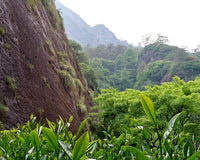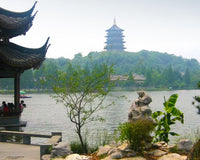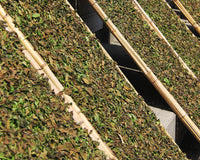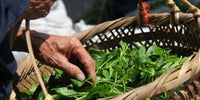There is no simple way of determining whether one tea type has more or less caffeine than another.
It is a falsehood to state that white tea is low in caffeine, whereas black tea is high in caffeine. In fact a Silver Needles white tea, picked in early spring, will have considerably more caffeine than a late picked, low grade China black tea.
Here are some key factors that impact the level of caffeine in tea:
- Picking season: spring teas are typically higher in caffeine.
- Picking grade: tippy teas with a high proportion of buds in them will be higher in caffeine.
- Large leaf varietals (Camellia var. Assamica rather than the Chinese Camellia var. Sinensis) typically have higher levels of caffeine.
- Longer brewing times tend to release more caffeine than shorter brewing times, as caffeine is water soluble.
- A coarse, leaf only, summer tea will be lower in caffeine than an early spring picked silver or golden needle tea.
White tea is a good example of the extreme caffeine variations possible within one tea type. For example, a Yin Zhen Silver Needle white tea will be significantly higher in caffeine than a summer picked Shou Mei white tea.
Organic and wild teas tend to have lower caffeine levels for a number of reasons, including non-use of nitrogen fertilisers and better biodiversity.










